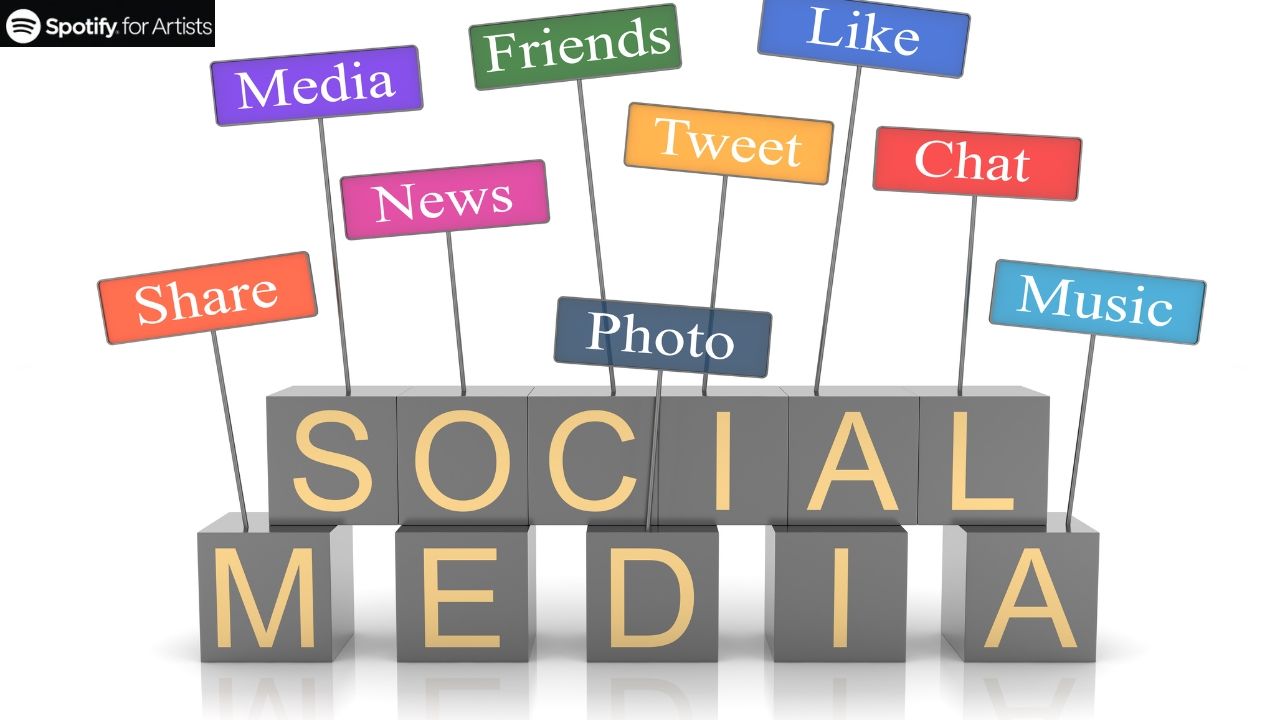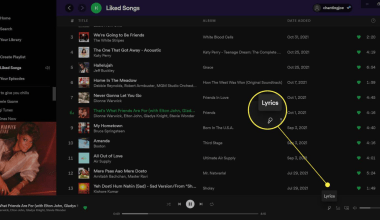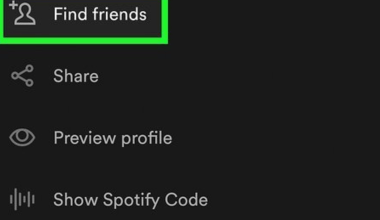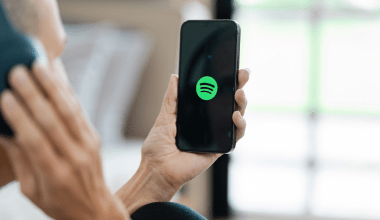Integrating Spotify with social media channels can be a game-changer for musicians. It not only helps in promoting your music but also in connecting with your audience on a deeper level. In this blog, we will explore various strategies and tips for effectively integrating Spotify with social media channels.
Integrating Spotify with social media channels allows artists to reach a broader audience. It helps in boosting engagement, increasing followers, and driving more streams. Here are some reasons why integrating Spotify with social media channels is essential:
- Enhanced Visibility: Sharing your Spotify tracks on social media platforms increases your music’s visibility, making it easier for fans to discover and stream your songs.
- Increased Engagement: Social media platforms like Instagram, Facebook, and Twitter allow direct interaction with fans, fostering a deeper connection.
- Content Variety: Integrating Spotify with social media channels provides a variety of content options, such as playlists, behind-the-scenes, and live sessions.
- Cross-Promotion: Using multiple platforms for promotion ensures that your music reaches diverse audiences.
- Analytics: Both Spotify and social media channels offer analytics tools that help track engagement and performance, allowing for more informed marketing strategies.
1. Spotify and Instagram
Instagram is a powerful platform for visual content and personal interaction. Here’s how you can integrate Spotify with Instagram:
a. Sharing Songs and Playlists on Stories:
- Open Spotify and select the song or playlist you want to share.
- Tap the three dots and choose “Share.”
- Select “Instagram Stories.”
- Customize your Story with text, stickers, and hashtags before posting.
b. Adding Spotify Links to Bio:
- Copy the link of your Spotify profile, song, or playlist.
- Go to your Instagram profile and tap “Edit Profile.”
- Paste the link in the “Website” field in your bio.
c. Using Swipe-Up Feature:
- If you have over 10,000 followers, you can use the swipe-up feature in Instagram Stories.
- Add a link to your Spotify track or playlist in your Story and encourage followers to swipe up to listen.
2. Spotify and Facebook
Facebook is great for community building and detailed posts. Here’s how you can integrate Spotify with Facebook:
a. Sharing Directly to Facebook:
- On Spotify, select the track or playlist you want to share.
- Tap the three dots and choose “Share.”
- Select “Facebook.”
- Add your caption and post it to your timeline.
b. Embedding Spotify Play Button:
- Spotify provides an embed option for songs and playlists.
- Copy the embed code from Spotify.
- Go to your Facebook post editor and paste the code.
c. Creating Facebook Events:
- Create events for album releases or live sessions.
- Share your Spotify link in the event details to drive traffic to your profile.
3. Spotify and Twitter
Twitter is excellent for real-time updates and engagement. Here’s how to integrate Spotify with Twitter:
a. Tweeting Spotify Links:
- On Spotify, select the track or playlist you want to share.
- Tap the three dots and choose “Share.”
- Select “Twitter.”
- Add your caption and tweet the link.
b. Using Twitter Cards:
- Ensure your website has Twitter Cards enabled.
- When you share Spotify links, they will appear with rich media, increasing engagement.
4. Spotify and YouTube
YouTube is perfect for video content and long-form engagement. Here’s how to integrate Spotify with YouTube:
a. Adding Spotify Links to Video Descriptions:
- Copy your Spotify profile, song, or playlist link.
- Paste the link in the description of your YouTube videos.
b. Promoting Spotify in Videos:
- Mention your Spotify profile in your videos and encourage viewers to follow you.
- Use end screens and annotations to direct viewers to your Spotify profile.
c. Live Streaming:
- During live streams, share your Spotify links in the chat and video description.
1. Spotify and TikTok
TikTok is a rapidly growing platform known for its viral content. Integrating Spotify with TikTok can significantly boost your music’s reach.
a. Using TikTok Sounds:
- Upload your music to TikTok’s sound library.
- Encourage fans to create videos using your tracks.
b. Challenges and Hashtags:
- Create hashtag challenges around your songs.
- Promote these challenges across all your social media platforms.
2. Spotify and Snapchat
Snapchat is popular among younger audiences and offers unique ways to share your music.
a. Sharing Spotify Links:
- Open Spotify and select the track or playlist you want to share.
- Tap the three dots and choose “Share.”
- Select “Snapchat.”
- Customize your snap with text and stickers before sending it to your friends or story.
b. Snapcodes:
- Create a Snapcode for your Spotify profile.
- Share the Snapcode on other social media platforms, encouraging followers to scan and listen.
1. Consistent Branding
Ensure that your branding is consistent across all platforms. Use the same profile picture, bio, and color scheme on Spotify and social media channels to create a cohesive image.
2. Regular Updates
Regularly update your social media with new content related to your Spotify profile. Share new releases, playlists, and behind-the-scenes content to keep your audience engaged.
3. Engage with Followers
Respond to comments and messages on social media. Engaging with your followers builds a loyal community and encourages more interaction with your content.
4. Collaborate with Other Artists
Collaborate with other artists and share each other’s Spotify links on social media. This cross-promotion can help both artists reach new audiences.
Use relevant hashtags to increase the visibility of your posts. For example, when sharing a new track, use hashtags like #NewMusic, #Spotify, and #Music.
6. Create Exclusive Content
Offer exclusive content on social media to encourage followers to check out your Spotify profile. This could be sneak peeks of new music, behind-the-scenes footage, or special announcements.
7. Monitor Analytics
Use the analytics tools provided by both Spotify and social media platforms to track the performance of your content. Analyzing this data can help you understand what works best for your audience and refine your strategy accordingly.
8. Optimize Posting Times
Post your Spotify links at times when your audience is most active on social media. This increases the likelihood of your posts being seen and engaged with.
There are several tools available to help integrate Spotify with social media channels more efficiently:
1. Buffer
Buffer allows you to schedule posts across multiple social media platforms. You can plan and automate your Spotify shares to maintain a consistent presence.
2. Hootsuite
Hootsuite offers comprehensive social media management, including scheduling, analytics, and engagement tools. It can streamline your Spotify integration efforts.
3. Linktree
Linktree provides a single link that leads to multiple destinations. You can create a Linktree for your social media bios, including links to your Spotify profile, latest releases, and playlists.
4. Later
Later is a visual scheduling tool for Instagram. It allows you to plan your posts and ensure that your Spotify content is shared at optimal times.
5. Canva
Canva is a graphic design tool that can help you create engaging visuals for your social media posts. Use it to design eye-catching graphics that promote your Spotify tracks and playlists.
6. SmartURL
SmartURL creates customizable, short links that you can use to promote your Spotify music. These links can direct fans to different streaming services based on their preferences.
7. Songwhip
Songwhip creates shareable links that automatically route fans to their preferred music streaming service. It’s a great way to ensure that your music is accessible to everyone.
Case Studies of Successful Spotify Integration
1. Artist A
Artist A successfully integrated Spotify with Instagram by regularly posting Stories with links to their latest releases. They also used the swipe-up feature to direct followers to their Spotify profile. As a result, Artist A saw a significant increase in Spotify followers and streams.
2. Artist B
Artist B used Facebook to create events for their album releases. By sharing Spotify links in the event details and posting regular updates, they managed to drive considerable traffic to their Spotify profile, boosting their overall engagement.
3. Artist C
Artist C leveraged Twitter’s real-time engagement by tweeting Spotify links during peak hours. They also engaged with followers by responding to comments and retweeting fan posts, which helped in building a strong community around their music.
1. Enhanced Interactivity
Future integrations between Spotify and social media platforms are likely to include more interactive features. This could involve live streaming capabilities, real-time fan interactions, and integrated shopping options for merchandise.
2. AI and Personalization
Artificial intelligence and machine learning will play a significant role in personalizing the integration experience. AI can help recommend the best times to post, the type of content that resonates most with your audience, and more.
3. Virtual and Augmented Reality
With the rise of VR and AR, future integrations might include virtual concerts, augmented reality experiences, and immersive content that can be shared across social media platforms and Spotify.
4. Cross-Platform Analytics
As integration between Spotify and social media channels becomes more sophisticated, expect to see improved cross-platform analytics. This will allow artists to get a more comprehensive view of their audience’s behavior, track engagement more accurately, and tailor their marketing strategies accordingly.
5. Direct Fan Monetization
Future integrations may offer more opportunities for direct fan monetization. This could include features like in-app purchases, exclusive content subscriptions, and direct tipping for artists through social media platforms linked to their Spotify profiles.
Tips for Getting the Most Out of Your Spotify Integration
1. Leverage User-Generated Content
Encourage your fans to create content featuring your music. This could be dance challenges, covers, or creative videos. Share these on your social media and Spotify profile to build a community around your music.
2. Run Contests and Giveaways
Host contests and giveaways that require participants to follow your Spotify profile or stream your latest track. This not only boosts engagement but also increases your follower count and streams.
3. Partner with Influencers
Collaborate with influencers who have a strong presence on social media. They can help promote your music to their followers, providing you with access to a larger audience.
4. Create Themed Playlists
Curate themed playlists that resonate with your brand and audience. Share these playlists on your social media channels to attract listeners and keep them engaged.
5. Utilize Spotify for Artists
Make full use of Spotify for Artists to update your profile, track your performance, and learn more about your audience. The more you understand your listeners, the better you can tailor your social media content to engage them.
6. Incorporate Behind-the-Scenes Content
Fans love to see the behind-the-scenes process of music creation. Share snippets of your recording sessions, songwriting process, and tour life on social media, and link them back to your Spotify profile.
7. Highlight Milestones
Celebrate your milestones such as reaching a certain number of streams, followers, or new releases. Share these achievements on social media to create a buzz and drive more traffic to your Spotify profile.
8. Engage in Real-Time
Use features like Instagram Live, Facebook Live, and Twitter Spaces to interact with your fans in real-time. Share updates, perform live, and answer fan questions while encouraging them to check out your Spotify profile.
Common Mistakes to Avoid
1. Inconsistent Posting
Inconsistent posting can lead to a drop in engagement. Make sure to maintain a regular posting schedule to keep your audience engaged.
2. Ignoring Analytics
Not utilizing the analytics tools available on Spotify and social media can hinder your growth. Regularly check your analytics to understand what content performs best and adjust your strategy accordingly.
3. Over-Promotion
While promoting your music is important, over-promoting can annoy your followers. Balance promotional posts with engaging, non-promotional content to keep your audience interested.
4. Poor Quality Content
Low-quality content can negatively impact your brand. Ensure that all your posts, whether images, videos, or text, are high-quality and reflect your brand’s image.
5. Not Engaging with Followers
Ignoring your followers can make them feel undervalued. Take the time to respond to comments, messages, and mentions to build a loyal community.
Conclusion
Integrating Spotify with social media channels is a powerful strategy for any musician looking to expand their reach and engage with their audience. By leveraging platforms like Instagram, Facebook, Twitter, YouTube, TikTok, and Snapchat, you can enhance your visibility, foster engagement, and drive more streams. Use the tips, best practices, and tools mentioned in this blog to maximize the benefits of integrating Spotify with social media channels.
Remember, the key to successful integration is consistency, quality content, and genuine engagement with your audience. By maintaining a strong presence across social media channels and consistently promoting your Spotify profile, you can build a loyal fan base and elevate your music career.
For further reading, explore these related articles:
- Benefits of midweek release
- Know the Ways to Get the Music Sync Licensing
- How to Update Your Bio on Spotify?
For additional resources on music marketing and distribution, visit Deliver My Tune.






